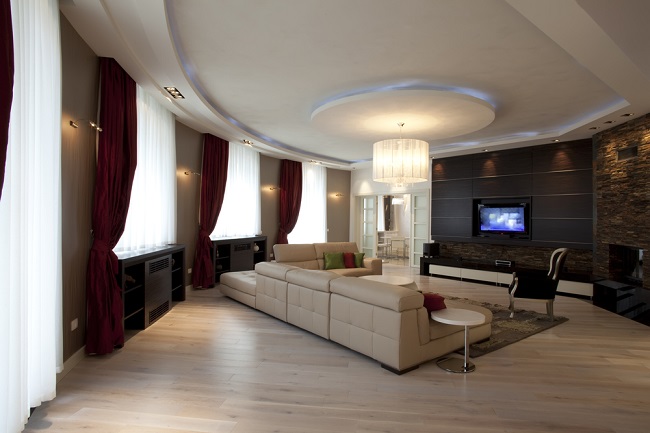The suspended acoustic ceilings are an additional level of ceiling that is hung beneath the original structural ceiling. These ceilings serve the dual purpose of enhancing room’s acoustic performance while improving the appearance of the room. Moreover, these ceilings provide an extra advantage of concealing the electrical, mechanical, and plumbing appliances from people’s view, without blocking the access to the accessories for maintenance purposes.
However, despite these apparent advantages, the acoustic ceilings are now an interior design idea of the past. These are also referred to as the popcorn ceilings. They went out of the trend near about two to three decades ago. No new houses have such ceiling anymore. And the old homeowners are also getting rid of them. There are several benefits of removing them.
In this article, we are going to discuss a few types of popcorn ceilings along with some pros and cons of removing those.

Types of Acoustic Ceilings
These ceilings can be categorized into 5 different groups depending upon their material.
1. Mineral Fiber: These are mostly the entry-level ceilings in terms of performance and price. These ceilings are made from the combination of clay, perlite, mineral fibres, and recycled newsprints.
2. Fibreglass: The fibreglass panels are available in various products.
3. Metal: Aluminium is the most commonly used metal for making the ceilings. These ceilings have small openings in them as they reflect the entire sound and do not absorb it.
4. Wood: There are myriads of variants of the ceilings made from wood material. There are 100s of them that are used commonly and out of these 100s, only 20 are used regularly.
5. Speciality Materials: These ceilings include many other materials like cemented wood, fibre, polyethylene felts, reinforced gypsum tiles, acoustic foams and PVC stretch.
Benefits of Removing Acoustic Ceilings
- With passage of time, these ceilings now look very clumsy in homes with modern interiors. The material of these ceilings tend to attract and absorb water stains in case there is any water seepage which degrades the overall appearance of the room. Due to water stains the white coloured secondary ceilings begin to turn yellow with time, making the room look dirty. Moreover, they tend to trap the natural light making the room look gloomy.
- These second layer of ceilings gives an invitation to spiders also. These ceilings are usually full of spider webs and a pile of dust. It makes the inhabitants vulnerable to allergies and breathing problems. The cleaning process is also very challenging.
- These ceilings reduce the curb appeal of your home. The new homeowners are usually reluctant to buy houses with the popcorn ceilings as they make the house look really old fashioned. Even if someone agrees to buy the house, they will pay less price, keeping the future expenses in mind as they would have to remodel it again. So, these ceilings can reduce the value of your house.
Drawbacks of Removing the Acoustic Ceilings
- Removing these ceilings is an extremely hazardous task. It will require an expert and professional help by the licensed and seasoned contractors which can make it a bit expensive at times. Besides, the process involves so much commotion inside the house, relocation of artefacts, furniture, etc.
- The main function of an acoustic roof is to soundproof the room. So, with the removal of the ceiling, this feature also goes away exposing you to a lot of noise from outside.
Conclusion
The acoustic ceilings do get a mixed reaction from the house owners. If you like to hold on to the old traditions or have a traditional theme for the interior of your house, then you might not want to remove them. However, removing the ceiling also has both advantages and disadvantages. It depends on you completely how you want to design your house. So, go with your own independent choices, and practical viability.
- How Primary Care Doctors Are Your First Line of Defense - December 23, 2024
- Live-In Caregiver Jobs: Providing Support, Building Bonds - December 19, 2024
- Caring for Your Porcelain Veneers: Tips for a Lasting Smile - November 12, 2024
